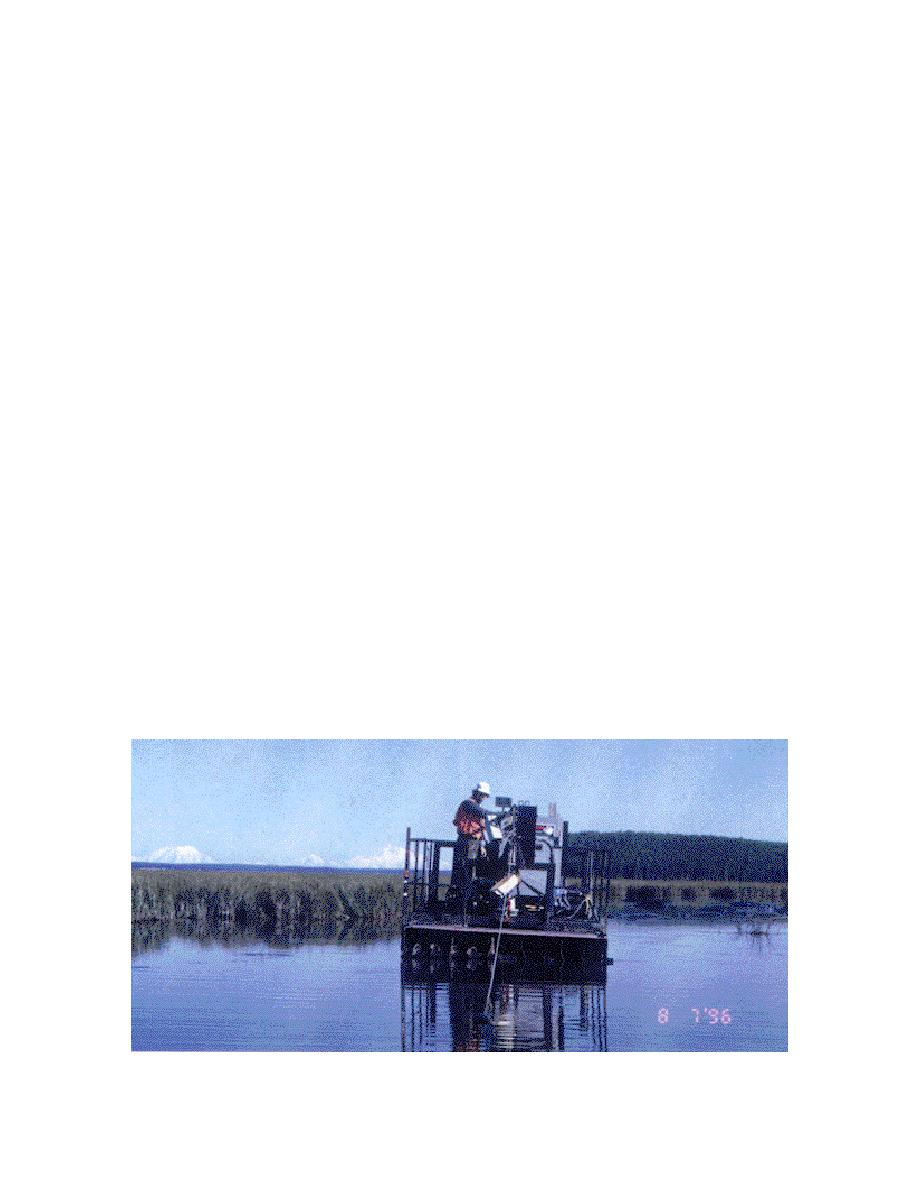
BACKGROUND
DREDGE DESIGN
White phosphorus is used by the Army as a
An augerhead-type hydraulic dredge (Fig. 2)
targeting and obscurant round. Because white
was leased locally and modified for the dredging
phosphorus is extremely volatile in air (pyro-
operations (Walsh et al. 1996). An augerhead
phoric), the common assumption is that, upon
dredge was specified due to the nature of the con-
detonation, all the material in a round is con-
taminant. White phosphorus is easily resuspend-
sumed. However, evidence of the persistence of
ed in water and settles slower than the sediments
white phosphorus in the environment has previ-
found at the Flats due to its lower specific gravity.
ously been documented, most notably in Placen-
The enclosed augerhead contains the sediment
tia Bay, Newfoundland, in 1968 (Idler 1969). The
during the dredging process, thereby reducing
U.S. military has also had experience with WP
the recontamination of the dredged area. The
dredge traverse system was anchored using 1-m3
contamination of the environment (Sullivan et al.
1979). Although information is available as to the
(1800-kg) concrete deadmen placed by helicopter,
toxicity and persistence of white phosphorus, it
supplemented by screw anchors placed in areas
was not widely known or perceived to be a prob-
cleared of ordnance (Fig. 3). The use of spuds and
lem at the time the die-offs were first being inves-
lateral cables was considered but rejected on the
tigated. An early study at the Flats in fact dis-
basis of the danger involved in setting the spuds
missed WP as a causal agent (ESE 1990).
in the sediment of the Flats as well as the difficul-
With the cause of the mortality at the Flats
ties involved in excluding ordnance from the bas-
identified, investigations were initiated to deter-
ket dredge head. It is also more difficult to oper-
mine the biological and physical extent of the
ate this type of system remotely.
white phosphorus contamination (Racine et al.
Due to the possibility of encountering unex-
1992, 1993). Remediation feasibility studies at the
ploded ordnance and debris in the Flats while
Flats were initiated in 1994. Two parallel strate-
dredging, a method of excluding these items
gies were pursued: removal and in-situ treat-
from the pump was designed and installed on the
ment. The in-situ work is generally less intrusive
dredgehead inlet. Several options were tried ini-
than removal. It ranges from enhancement of nat-
tially, including screening the inlet, separating
ural attenuation and pumping or draining of con-
ordnance in a flow expander box, and adding a
tiguous ponded areas to covering contaminated
grate to the expander box. Although all these al-
areas with geotextiles or a bentoniteballast mix-
ternatives were effective in excluding ordnance
ture. Each methodology is best applied to specific
from the pump, they eventually failed due to the
presence of heavy vegetation and woody debris,
areas. Large, deep, contiguously ponded areas
which either clogged the screens or passed
were targeted for dredging.
Figure 2. Dredge.
2



 Previous Page
Previous Page
